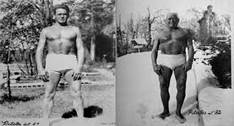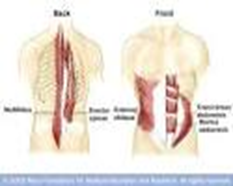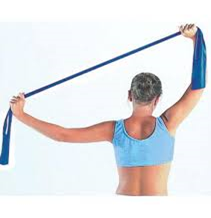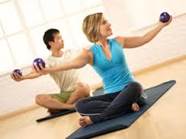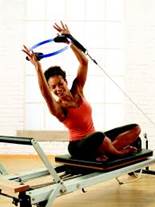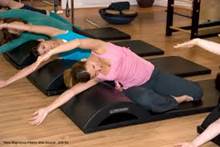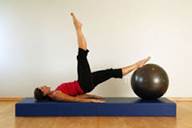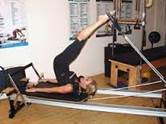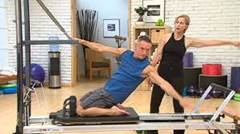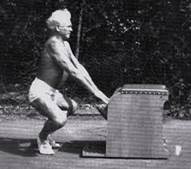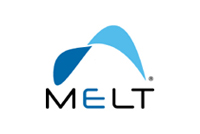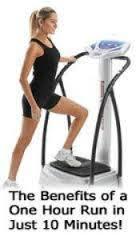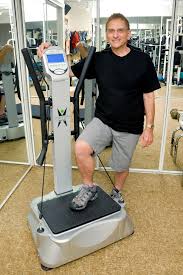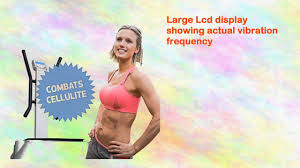Pilates
Joseph Pilates
There are many versions of the history of Joseph Pilates but the most accurate can be read in, Caged Lion-Joseph Pilates and His Legacy, by John Steel Howard. He was a long time student and friend of Joseph and Clara Pilates. JP believed that people should be equally balanced in body, mind and spirit. He believed that modern day living, poor posture and inefficient breathing contributed to poor health. Pilates originally called his work, “Contrology,” because mind and body muscle control is required to perform Pilate’s exercises. His exercises were to be performed slowly and smoothly with concentration and precision. He was a man who thought way ahead of his time. Pilates no longer follows the rigid rules followed in Joseph Pilates studio, there are many styles and not one brand.
What is Pilates?
Pilates brings the mind and body together. It focuses on torso strength and peripheral strength. The torso involves back, front and side muscles. Pilates works the body dynamically using eccentric and concentric movements, which help to balance the muscles, heal chronic back pain, and more efficient breathing.
The breathing helps to bring about concentration so that form and exercises are both correct. Increasing stamina. Quality is more important in Pilates, which is why no more than ten repetitions are usually performed. When movements are performed well, there is no need to repeat many times.
Pilates is suitable for everyone and every age group. Many people use it on completing their physical therapy and after their injuries have healed.
“In 10 sessions you will feel the difference, in 20 sessions you will see the difference and in 30 you will have a new body.”-Joseph Pilates. This means that a person would need to do Pilates 3 to 4 times a week, not every week for 30 weeks. Pilates can be taken with an instructor, in a class or at home which makes reaching goals more realistic.
What is the Core?
Stomach:
1. Transverse abdominals: These are the deepest of the stomach muscles and are also considered as the most important for a strong core. They will help with flexing and twisting at the waist and they protect our organs. They also create a strong base and link between the upper and lower body (Marked in red on the first diagram).
2. Obliques: These muscles are positioned to the sides of our waists and link all the way up to the rib cage. They will help with movements involving twisting and tilting at the waist (Marked in purple in the second diagram).
3. Rectus Abdominus: Sits on top of the other stomach muscles and down the centre from the rib cage to the pubis bone. Its main job is to keep the pelvis in line which in turn protects the spine. (Marked in red in the second diagram).
Back:
4. Erector Spinae: These are small muscles that run up your whole spine on both sides. These muscles tend to be very tight and weak outside of the normal range. If you have a weak core, these muscles tend to take the brunt of it. One of their main jobs is to keep you upright but they also help with the twisting and bending of your trunk.
Hip:
5. Ilio-psoas: Also known as your hip flexor muscles. These are situated at the top front of your legs and help raise the upper leg upwards. They join in the top of the thigh and travel through your pelvis and onto your lower spine.
6. Glutius Maximus: These muscles are in your behind and play a big part in moving the legs during walking and running and are very important for good posture, which in turn is essential for a strong core. These muscles tend to be very weak on most people.
7. Glutius Medius and Minimus: These are two more muscles found in your posterior, underneath you glutius maximus. They are much smaller and again seem to be generally weak in most people. Their main job is to take your leg out to the side and to rotate the whole leg outwards.
Why is a strong “Core” important?
The “Core” is made up of so many different muscle groups, around our torso. We are already using our “Core” when we get out of bed, stand up and walk. We just feel better if we strengthen and stretch them regularly.
Mind Body
Pilates isn’t about brute strength but about utilizing all the muscles in the same way that a smaller boxer can beat a larger one by using intelligent tactics rather than one heavy punch.
Joseph Pilates was ahead of his time when his idea of how a body should move.
The Core
The Core is a word used loosely by many. Think about all the muscles around the torso. Pilates helps to strengthen the muscles of the torso. These include the multifidus which runs along the vertebral column and extends and rotates the spine, the obliques, located on the side and front of the body and the muscles of the back. Transverse Abdominis, located under the obliques and the rectus abdominis, which runs down the front.
What is Mind body?
Pilates focuses on bringing the mind-body together with breath and feeling your body. As opposed to yoga which is more meditative.
Joseph Pilates designed the Pilates exercises with the intention they would touch every aspect of a person’s life. The exercises were designed to bring about awareness in everyday life from physically moving to personal relationships. He had the idea that practicing Pilates using the mind body connection would eliminate the body of diseases and social ills.
To practice Pilates means to bring about balance and increase the capability of body, mind and soul. This should improve posture, body mechanics and physical and mental wellbeing. Practicing Pilates should bring about mental and physical harmony.
Pilates equipment
Pilates can be done on the floor using a mat or on equipment.
Pilates Mat
Mat exercises are the fundamentals to all Pilates exercises and it is important that is taught in layers, so that they can be done in a way that’s challenging to the individual, not the group.
Props and small equipment
Props may be used to enhance the Pilates mat exercises. The use of Props can enhance the movements by adding resistance or be used as a tactile cue for mind body feedback.
The Flex ball is a small inflated ball that offers excellent feedback as it can be placed behind the lower back to encourage deep core awareness. It can be placed between the knees to encourage proper alignment to those with weak muscles, to stop their legs dropping open. Although the flex ball is not an original piece of Pilates equipment, It is a great to use offer resistance, feedback and support.
Bands can be used for resistance and for supporting the legs during exercise.
Toning balls are weighted balls that can be held without gripping tightly. These balls add resistance to the exercises, as Pilates is about recruiting muscles as a system only light balls or weights should be used.
Fitness or Magic Circle is a round device with padded handles. It adds resistance to Pilates exercises and encourages shoulder stability feedback.
The Foam Roller can be used to enhance Pilates exercises on the mat. I personally prefer to see a softer roller used for improving blood flow as is used in the MELT method.
Small Arc barrel can be used by clients to support their head and shoulders, to sit on and to support their spines during exercises when legs are in tabletop. It encourages flexibility in the spine, shoulders chest and legs. It can be used by more advanced clients to enhance Pilate’s exercises.
Stability balls are popular because of their instability. The core has to subconsciously work to keep a person stable, even if they are only sitting on the stability ball. A person needs to have mind body awareness through mat Pilates to do Pilates exercises with precision on the ball.
Pilates Large Equipment
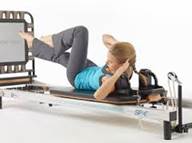
The Reformer is the main piece of equipment used in clubs and studios. It can be used as a group class. The reformer glides forwards and backwards. It uses springs for resistance. It can be used for many exercises and positions. You can stand, sit and lay down on the reformer. Using springs provides gradual resistance as the muscles contract which helps the muscles work correctly. The greatest resistance is.at the strongest contraction of the muscles and the least resistance at the beginning and end of the movement so there is less stress on tendons and ligaments.
To add cardio and weight bearing to an exercise routine, a cardio tramp which is low impact can be attached to a reformer. A jump board can also be attached for cardio and higher impact which can increase bone density. These are new additions to modern day Pilates and can be done alongside Pilates.
Cadillac
This was named because Joseph Pilates believed it had all the accessories you could possibly need and it was big and comfortable.
It does look a bit medieval and intimidating. It is usually used for Private Pilate’s sessions and can be used by the beginner and advanced client. There are many movements that all abilities can enjoy on the Pilates Cadillac. This can be used for muscle conditioning, mobility and to improve flexibility.
Many reformers have a tower attached to them so that many of the Cadillac exercises can be performed in group sessions.
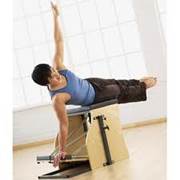
Pilates Chair
This looks like a chair with a padded seat. It has a pedal which can often be split to two. It strengthens the core, arms and legs. Exercises can be done laying down, standing and sitting. It improves stability, strength and flexibility.
It is a simple self-treatment to reduce pain using a small ball. I offer hand and foot pain relief but foam rollers can also be used on the larger areas of the body. This method helps to rehydrate connective tissue and improve joint mobility and the nervous system. Anyone can benefit from this method.
The Hypervibe & Vibration Training
Vibration training takes place on a vibrating platform. https://www.youtube.com/watch?v=S_2G7LEe9-M
It can be safely used by most people of all ages. It can be used by an elderly person for 2 minutes to improve their bone and muscle loss to very fit people. The effectiveness of whole body vibration depends on:
Frequency: How many times the platform moves up and down per second. High frequencies generate faster movement of the platform. The frequencies used depend on your body type, fitness levels and desired goals.
Amplitude: is a measure of how high the platform rises above its horizontal resting place. Larger amplitudes cause greater movement and a stronger response. If the levels are too low on some machines there won’t be any benefits.
Gravitational (G Force): whole body vibration increases your exposure to gravity. It’s as if you become heavier and gravity is pulling you down. Gravity reduction occurs in day to day life because the majority of us sit for significant amounts of time, which accelerates aging. By using a vibration machine we can reverse the aging process.
Benefits of vibration training
Stronger Bones: There is no risk of injury as the individual is standing still. The G force and muscle contraction provide the stress on the bones.
Muscle Strength: No weights are needed (although weights can be used if desired). The more G force used the greater the stimulus on the muscles, nerves and bones. This has to be done gradually, especially if a person hasn’t exercised for a while.
Weight Loss: The body responds to gravity improving muscle and helps eliminate fat and cellulite. It speeds up the metabolism.
Circulation: Sitting around makes us sluggish which effects our circulation. When we are exposed to G force our circulation improves as the muscles increase their strength of contraction. The lymphatic system starts working and we feel more energetic.
Pain relief: standing still on the vibration machine warms the muscles and improves circulation.
- Are you fatter than this time last year?
- Are you looking for another way to lose weight?
- Are you sitting comfortably?
- Pilates…………..not for Men!
- Pilates and Vibration Machines
- Pilates Introduction
- Pilates For Golfers
- Pilates for Teens and Adolescents in Sports
- Relieve back pain through Pilates
- The Pilates Reformer
- Understanding Your Heart
- What is Pilates?
- You have to move it to lube it

